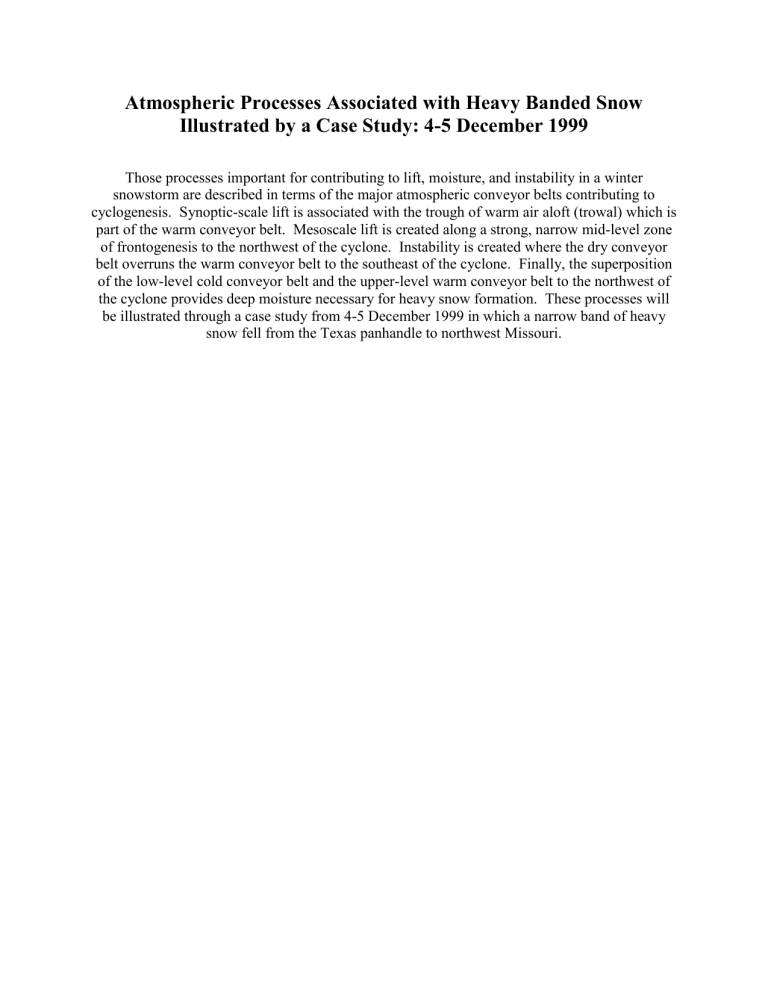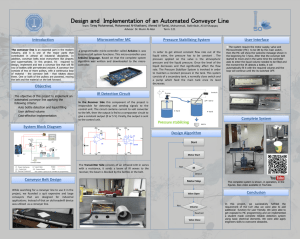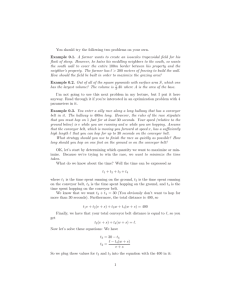Atmospheric Processes Associated with Heavy Banded Snow

Atmospheric Processes Associated with Heavy Banded Snow
Illustrated by a Case Study: 4-5 December 1999
Those processes important for contributing to lift, moisture, and instability in a winter snowstorm are described in terms of the major atmospheric conveyor belts contributing to cyclogenesis. Synoptic-scale lift is associated with the trough of warm air aloft (trowal) which is part of the warm conveyor belt. Mesoscale lift is created along a strong, narrow mid-level zone of frontogenesis to the northwest of the cyclone. Instability is created where the dry conveyor belt overruns the warm conveyor belt to the southeast of the cyclone. Finally, the superposition of the low-level cold conveyor belt and the upper-level warm conveyor belt to the northwest of the cyclone provides deep moisture necessary for heavy snow formation. These processes will be illustrated through a case study from 4-5 December 1999 in which a narrow band of heavy snow fell from the Texas panhandle to northwest Missouri.











